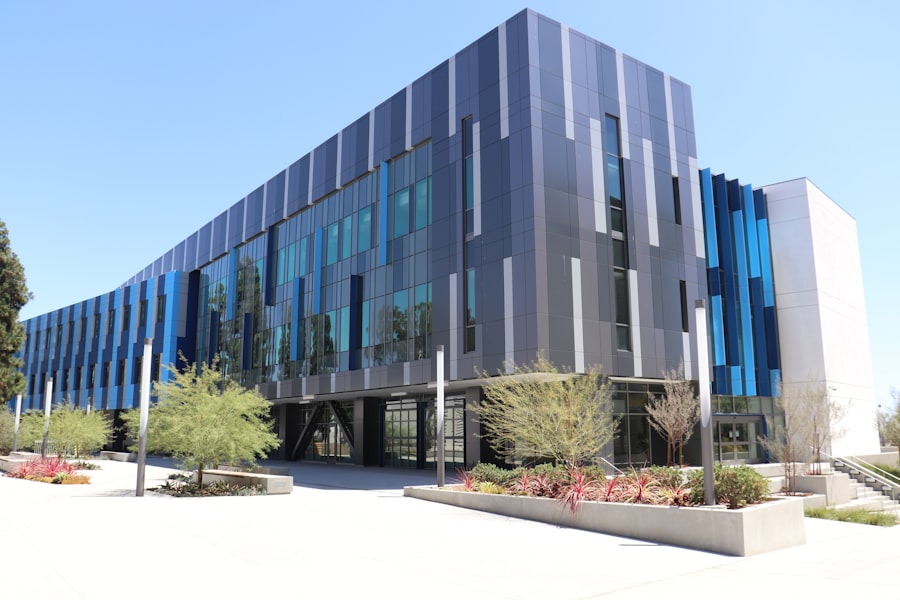When it comes to commercial real estate insurance, understanding the basics of insurance rates is crucial for property owners and investors alike. Commercial real estate insurance rates are not a one-size-fits-all scenario; they vary widely based on numerous factors, including the type of property, its location, and the specific risks associated with it. Generally speaking, these rates are calculated based on the potential risk of loss or damage to the property, as well as the likelihood of liability claims arising from its use.
To put it simply, if you own a high-rise office building in a bustling urban area, your insurance rates will likely differ from those of a small retail shop in a quiet suburb. The former may face higher risks due to factors like theft, vandalism, or natural disasters, while the latter might have a more stable risk profile. Understanding these nuances can help you make informed decisions about your coverage and ensure that you’re not overpaying for insurance that doesn’t meet your needs.
Key Takeaways
- Commercial real estate insurance rates are determined by factors such as the property’s location, type, and size, as well as the coverage and deductible chosen.
- Factors affecting commercial real estate insurance rates include the property’s risk factors, such as its age, condition, and any previous insurance claims.
- Types of coverage available for commercial real estate insurance include property insurance, liability insurance, business interruption insurance, and umbrella insurance.
- To lower commercial real estate insurance rates, property owners can implement risk management strategies, increase security measures, and maintain a good claims history.
- Common misconceptions about commercial real estate insurance rates include the belief that rates are solely based on property value and that all insurance policies offer the same coverage.
Factors Affecting Commercial Real Estate Insurance Rates
Location, Location, Location
The location of the property is one of the most significant factors in determining insurance rates. Properties situated in areas prone to natural disasters, such as hurricanes, floods, or earthquakes, typically face higher premiums. Insurers assess the risk associated with each location and adjust their rates accordingly. For instance, a property in Tornado Alley may have a different rate than one located in a region known for its mild weather.
Business Type and Risk Level
The type of business that operates within the property is another critical factor. Different industries come with varying levels of risk. A manufacturing facility may be deemed riskier than an office space due to the potential for accidents or equipment failures.
Building Age and Condition
The age and condition of the building itself can also influence rates. Older buildings may require more maintenance and could be more susceptible to damage, leading insurers to charge higher premiums.
Types of Coverage Available for Commercial Real Estate Insurance

When it comes to commercial real estate insurance, there’s no shortage of coverage options available to property owners. The most common type is property insurance, which protects against damage to the physical structure and its contents due to events like fire, theft, or vandalism. This is your bread-and-butter coverage, ensuring that your investment is safeguarded against unforeseen circumstances.
However, property insurance is just the tip of the iceberg. Liability insurance is another essential component that protects you from claims arising from injuries or damages that occur on your property. If someone slips and falls in your building, liability insurance can cover legal fees and medical expenses.
Additionally, you might consider business interruption insurance, which compensates for lost income if your operations are halted due to a covered event. With so many options available, it’s vital to assess your specific needs and choose coverage that aligns with your business model.
How to Lower Commercial Real Estate Insurance Rates
| Factors | Impact |
|---|---|
| Property Location | High-risk areas may lead to higher rates |
| Building Age and Condition | Newer and well-maintained buildings may result in lower rates |
| Security Measures | Implementing security systems can lower rates |
| Claims History | Low or no claims can lead to reduced rates |
| Deductible Amount | Higher deductibles may result in lower premiums |
Now that we’ve established what affects commercial real estate insurance rates, let’s talk about how you can lower those pesky premiums without sacrificing coverage. One effective strategy is to increase your deductible. A higher deductible means you’ll pay more out-of-pocket in the event of a claim, but it can significantly reduce your premium costs.
Just make sure you have enough cash reserves to cover that deductible if disaster strikes. Another way to lower your rates is by implementing risk management practices. This could include installing security systems, conducting regular maintenance on your property, or even providing safety training for employees.
Insurers love to see proactive measures taken to mitigate risks, and they may reward you with lower premiums as a result. Additionally, shopping around for quotes from multiple top-rated carriers can help you find the best deal tailored to your specific needs.
Common Misconceptions About Commercial Real Estate Insurance Rates
In the world of commercial real estate insurance, misconceptions abound like weeds in a garden. One common myth is that all insurance policies are created equal. Spoiler alert: they’re not! Different insurers offer varying levels of coverage, exclusions, and endorsements that can significantly impact your protection and costs.
Another misconception is that once you’ve secured a policy, you’re set for life. In reality, your insurance needs may change over time due to factors like business growth or changes in property use. Regularly reviewing your policy ensures that you’re adequately covered and not paying for unnecessary extras. Remember, staying informed is key; ignorance may be bliss, but it won’t help when it comes time to file a claim.
The Importance of Working with an Experienced Insurance Broker

Understanding Your Options
A knowledgeable broker can help you understand your insurance options, identify potential gaps in coverage, and negotiate better terms with insurers on your behalf. This expertise can provide you with a clear understanding of your insurance needs and ensure you are adequately protected.
Access to Multiple Carriers
Brokers have access to multiple insurance carriers, allowing them to provide you with quotes tailored to your specific needs. This means you can compare rates and coverage options, ensuring you get the best deal for your business.
Staying Ahead of Industry Trends
An experienced broker can also keep you informed about industry trends and changes that may affect your coverage or rates. This valuable insight can help you make informed decisions about your insurance and stay ahead of the curve. By working with a knowledgeable broker, you can save time, money, and avoid potential headaches down the road.
Understanding the Claims Process for Commercial Real Estate Insurance
Ah, the claims process—the part of insurance that nobody really wants to think about until they absolutely have to! Understanding how this process works can make all the difference when it comes time to file a claim. First and foremost, it’s essential to report any incidents promptly; most insurers have specific timeframes within which claims must be filed.
Once you’ve reported a claim, an adjuster will typically be assigned to assess the situation and determine the extent of coverage applicable. This is where documentation becomes crucial—having photos, receipts, and any other relevant information at hand can expedite the process and ensure you receive fair compensation. Remember, patience is key; claims can take time to process, but staying organized and proactive will help keep things moving along smoothly.
Trends and Changes in Commercial Real Estate Insurance Rates
As we look toward the future of commercial real estate insurance rates, it’s essential to stay informed about emerging trends and changes in the industry. One notable trend is the increasing emphasis on sustainability and green building practices. Insurers are beginning to recognize that properties designed with energy efficiency in mind may pose lower risks and could lead to reduced premiums for environmentally conscious owners.
Additionally, as technology continues to evolve, so too does the landscape of commercial real estate insurance. The rise of smart buildings equipped with advanced security systems and monitoring technologies can lead to lower risk profiles and potentially lower rates for owners willing to invest in these innovations. As we move forward into an ever-changing market, staying ahead of these trends will be crucial for property owners looking to optimize their insurance coverage.
In conclusion, navigating the world of commercial real estate insurance requires diligence and knowledge. By understanding the basics of rates, factors affecting them, types of coverage available, and how to lower costs effectively, you’ll be better equipped to protect your investment. Don’t forget the importance of working with an experienced broker who can guide you through this complex landscape and help you make informed decisions tailored to your unique needs.
So why wait?
Visit https://commercialpropertyquotes.com/ for a quote tailored just for you—because when it comes to protecting your investment, there’s no time like the present!
If you are interested in learning more about commercial real estate insurance rates, you may want to check out the article titled “Understanding the Factors that Impact Commercial Property Insurance Rates” on commercialpropertyquotes.com. This article delves into the various factors that can influence insurance rates for commercial properties, providing valuable insights for property owners and investors. For more information or to get a quote, you can visit commercialpropertyquotes.com.
FAQs
What factors affect commercial real estate insurance rates?
Factors that can affect commercial real estate insurance rates include the location of the property, the type of property (such as office building, retail space, or industrial property), the age and condition of the property, the coverage limits and deductibles chosen, and the insurance company’s underwriting criteria.
What types of coverage are typically included in commercial real estate insurance?
Commercial real estate insurance typically includes property coverage for the building and its contents, liability coverage for injuries or property damage that occur on the premises, and business interruption coverage to help cover lost income if the property is damaged and unable to be used.
How can commercial real estate owners lower their insurance rates?
Commercial real estate owners can lower their insurance rates by implementing risk management strategies such as improving security measures, maintaining the property in good condition, and choosing higher deductibles. They can also shop around for quotes from different insurance companies to find the best rates.
What are some common exclusions in commercial real estate insurance policies?
Common exclusions in commercial real estate insurance policies may include coverage for certain types of natural disasters (such as floods or earthquakes), acts of terrorism, pollution liability, and certain types of property damage or loss that are not directly related to the property itself.
How do insurance companies determine commercial real estate insurance rates?
Insurance companies determine commercial real estate insurance rates based on a variety of factors, including the property’s location, construction, occupancy, and protection features, as well as the owner’s claims history and the coverage limits and deductibles chosen. They also consider market conditions and underwriting guidelines.



